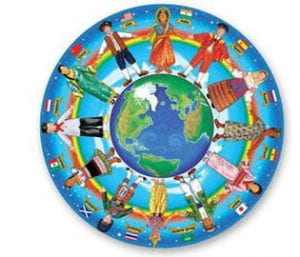The healthcare field, that is painted to be a blessing for many Americans, happens to also be a huge source of fear for many Americans as well. Throughout history, our healthcare system has shown to ignore and strike fear into specific groups of people. For this reason, through years of trauma and story telling, the fear of these same healthcare systems tend to be passed down as generations pass by. Many Americans then grow up with the constant fear of the healthcare system and seeking assistance when something alarming may appear.
According to CenterJD:
- The Harvard Medical Practice Study found, “there were significant differences between hospitals that serve a predominantly minority population and other hospitals. That is, Blacks were more likely to be hospitalized at institutions with more AEs [adverse events] and higher rates of negligence.”
- The Agency for Healthcare Research and Quality, a division of the U.S. Department of Health and Human Services, found, “Blacks received poorer quality of care than Whites in 43 percent of the core measures” and “disparities in quality and access to care are growing wider in the Hispanic population.”
- Racial and ethnic minorities are uninsured more often than non-Hispanic Whites, a status that frequently results in less than adequate care.
- A study by the Robert Wood Johnson Foundation found that compared with the insured, those without health coverage who are hospitalized are more likely to receive fewer services, experience second-rate care, and die in the hospital.
Although this CenterJD post is from 2008, it puts into perspective how medical malpractice is not only a problem of the past during chaotic events such as WWI and WWII and how medical malpractice still very much affects our society today.
As Covid-19 is the modern issue at hand for most people in the United States, we often take into question who and how quickly is Covid-19 affecting people. Pasted below are statistics around Covid-19 in relation to race and ethnicity in America.
Evidently from the statistics given by the CDC, American Indian/Alaska Natives, Black/African Americans and Hispanic/Latino persons are way more likely to die and be hospitalized by Covid-19 than their White counterparts. This may be due to a multitude of reasons stated by the CDC. They claim that “Race and ethnicity are risk markers for other underlying conditions that affect health including socioeconomic status, access to health care, and exposure to the virus related to occupation, e.g., frontline, essential, and critical infrastructure workers.”
One very prominent example of this inequality in the healthcare field is Black women in America’s healthcare system. According to Black Women’s Health Imperative, “Black women are 3-4 times more likely to die from pregnancy-related complications and 3-4 times more likely to suffer from severe disability resulting from childbirth compared to White women.” Black women are also much more likely to experience birth injuries and deaths due to other factors that are engraved in our societal structure. According to AJMC, When analyzing preterm birth numbers, it is evident that women living in areas of high violent crime and high air pollution that have the highest risk of preterm birth. “Black women are 4 times more likely to live in a neighborhood with high violent crime and high air pollution than White women,” which may partially explain why there is such a difference in the birth characteristics of these two groups. Heather Burris, a current medical doctor, stated that “both physical and psychological stressors can lead to low birth weight and other health disparities” as well. This is why we must view these issues with historical context in mind. Discrimination and Racism, such as redlining, food deserts and many other forms of control by the American systems were used and ultimately affect the way that many Black Americans and other American groups function to this day.
According to Endofound, Health conditions that disproportionately affect Black women receive less government research funding than other similar diseases. They state that “estimates reveal that nearly a quarter of Black women between the ages of 18 and 30 have [uterine] fibroids — compared with 7 percent of White women. By age 35, that number increases to 60 percent. However, NIH annual funding for the condition is $17 million — compared to $86 million for cystic fibrosis, which impacts far fewer people each year (though the great majority of those impacted are Caucasian).” Cystic Fibrosis is a much rarer disease according to Cystic Fibrosis Foundation as there are around 70,000 currently living people worldwide with this condition. There are more than 200,000 cases of Uterine Fibrosis in the United States alone. Cystic Fibrosis appears to be much deadlier, however, the lack of funding in a department for an illness that is extremely common should be of concern. With more demand, more funding would seem like a plausible reaction, however, the current funding clearly shows otherwise.
As shown by the article’s data presented by Nature’s Alice B. Popejoy and Stephanie M. Fullerton, many racial and ethnic minority groups are still not present in genome wide association studies funded by the National Institute of Health. Popejoy and Fullerton state that “together, individuals of African and Latin American ancestry, Hispanic people (individuals descended from Spanish-speaking cultures in central or South America living in the United States) and native or indigenous peoples represent less than 4% of all samples analysed.” These numbers are ridiculous and makes it very hard for many people of color to feel as safe as their White counterparts, since there is significantly less statistical data that provides the same support and comfort in their own safety.
According to an article by Lauren Frayer, the NHS, which is the state funded company that funds health care for all in Britain, polls better than the queen, showing that British citizens are extremely fond of the system that is set in place to help all of its citizens. Richard Murray, a policy director for a health care think tank named the Kings Fund, says that it would be “electoral poison” for any political figure in the UK to advocate for privatizing the NHS. This feeling is mutual among many citizens of other countries with some form of universal health care as well. Many other countries such as Canada, Sweden, Spain and many more have very similar policies set in place to help aid citizens in getting better health care coverage. In a similar fashion the Affordable Care Act (ACA) in the United States made health insurance much more attainable for some citizens but also made more complications for others citizens as well. According to healthline, “more than 16 million Americans obtained health insurance coverage within the first 5 years of the ACA. A more affordable health insurance would help many groups such as the large amounts of people who live in high crime areas and high levels of poverty such as big cities like Chicago, Los Angeles and many other similar areas. Although our country is yet to promote policies that provide realistic health care policies for all, there is always room for change and progress as we try to become more united as a country.
Universal health care coverage can be achieved in a multitude of ways and this graphic by commonwealth fund displays methods of achieving the end goal of universal health care.
This is evidently a multi-faceted issue as the health care problems for many groups in America are not only caused by one specific source. Our country must start by fixing the issue of widespread poverty in our country because it directly correlates to so many problems within our country including health care inequality. We must use our resources to help build up and fortify the communities that are not properly funded nor given the opportunities as many of the wealthier communities in the United States due to this lack of funding and lack of emphasis to support these areas. Without proper steps towards building these communities and making health care a more realistic option, a large amount of the United States’ population will continue to suffer and struggle for years to follow.



Leave a Reply